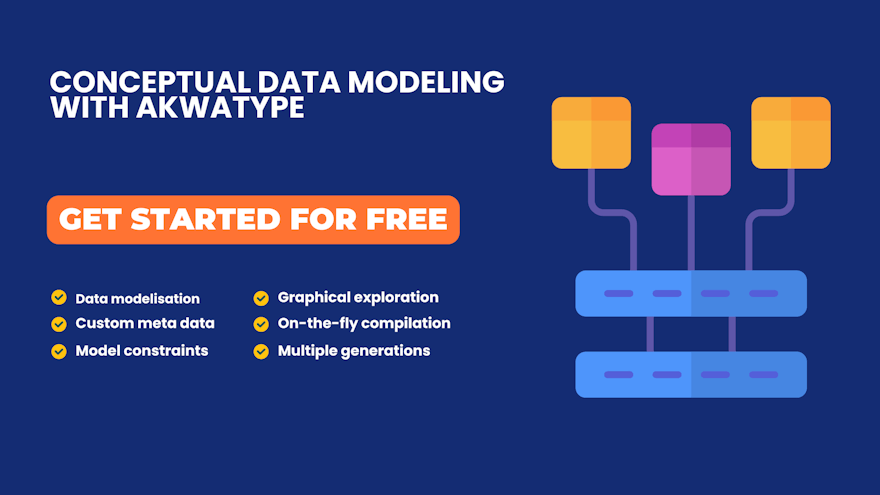Conceptual data modeling is a crucial step in the design of efficient information systems. It
provides an abstract representation of business domain entities and their relationships.
Akwatype offers powerful tools to facilitate this process, ensuring consistency and clarity right
from the start of the project.
What is Conceptual Data Modeling?
Conceptual data modeling involves creating an abstract representation of the essential
information in a business domain. It focuses on entities, attributes and relationships, without
concern for technical details or implementation. This model serves as a basis for understanding
and communicating data requirements between stakeholders.
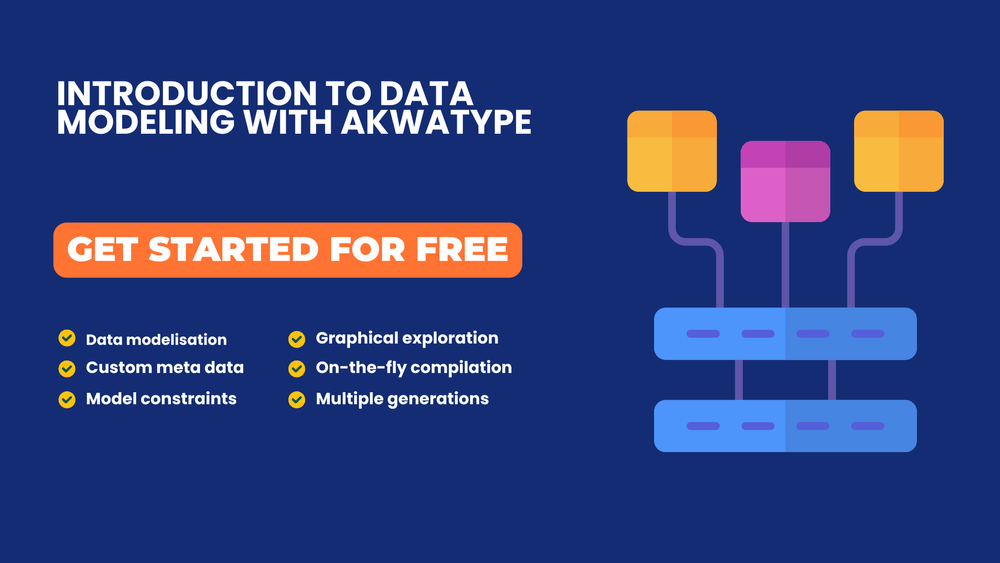
Importance of Conceptual Data Modeling in Projects
Good conceptual modeling ensures that all those involved in the project share a common
understanding of the data. It facilitates early detection of inconsistencies or omissions, reducing
the risks and costs associated with subsequent modifications. It also provides the foundation for
subsequent logical and physical modeling steps.
Conceptual Model Creation Process
To create a conceptual model, it is necessary to follow structured steps that facilitate the
organization and management of information right from the start of projects.
Steps and methodologies
1. Entity identification: Identify the key elements (customers, products, transactions, etc.)
that will make up the model.
2. Relationship definition: Establish links between entities. For example, a customer may
carry out several transactions.
3. Attribute definition: associate specific characteristics with each entity (name, address
for a customer).
4. Consistency check: Validate the model, ensuring that all necessary information is
represented.
Essential to remember that the creation of a conceptual model is first and foremost about
understanding and formalizing a business domain. This process requires workshops with
business representatives to deepen understanding of the domain.
It is also crucial to share the model under construction in a clear and comprehensible way, to facilitate its validation by all stakeholders.
Example of a conceptual model :
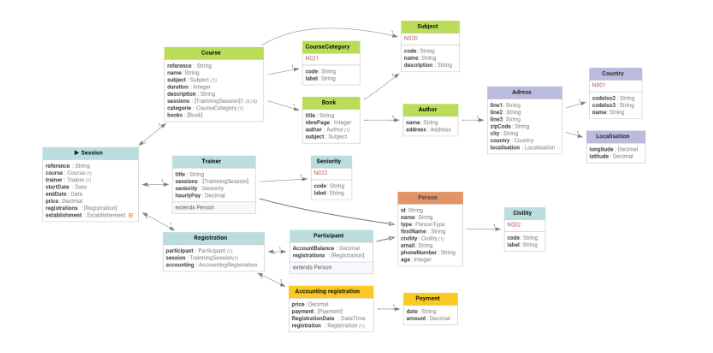
This simple model describes a training management system. It is made up of courses, training
sessions and participants. Each course covers a specific topic, can be linked to reference
books, and is divided into several sessions. Sessions are associated with a trainer, and
participants can register for training sessions.
In order not to overload the example, the management of establishments has been masked.
One of Akwatype great strengths is that it is a data model description tool, not just a drawing
tool. With Akwatype, schemas are generated from descriptions, and multiple representations
can be produced from a single model.
This aspect is important for mastering large models (potentially several hundred entities).
For example, this diagram represents a different exploration of this model. The exploration
starts from the Establishement entity, with a reduced exploration depth and the deletion of
attributes carrying links between types.
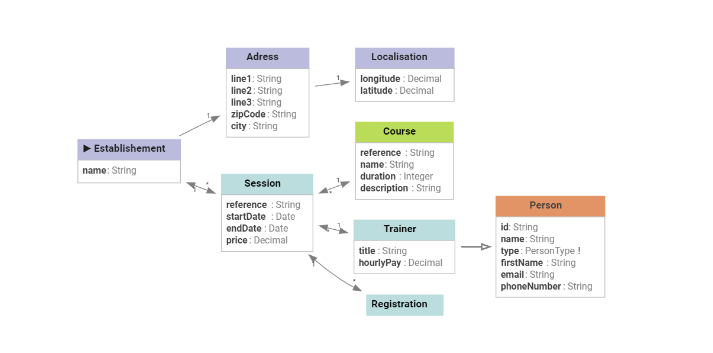
Unlike conventional UML diagrams, Akwatype enables you to share different, but perfectly
coherent, representations of the same model. They are adapted to the different project players,
both business and technical.
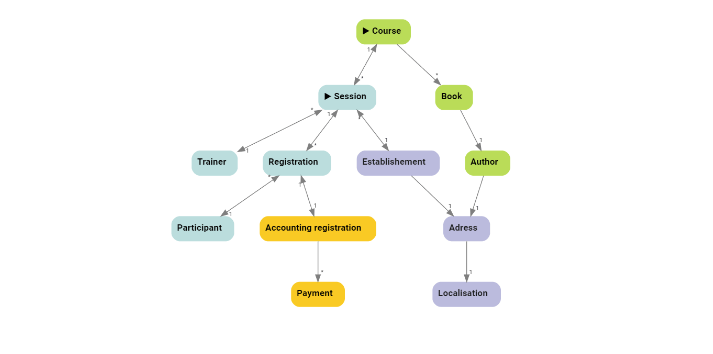
Conclusion
Conceptual data modeling is an essential step towards project success. By choosing suitable
tools such as Akwatype, teams can structure their data efficiently right from the start of projects.
This ensures better communication between stakeholders and lays the foundations for sound
technical design.

